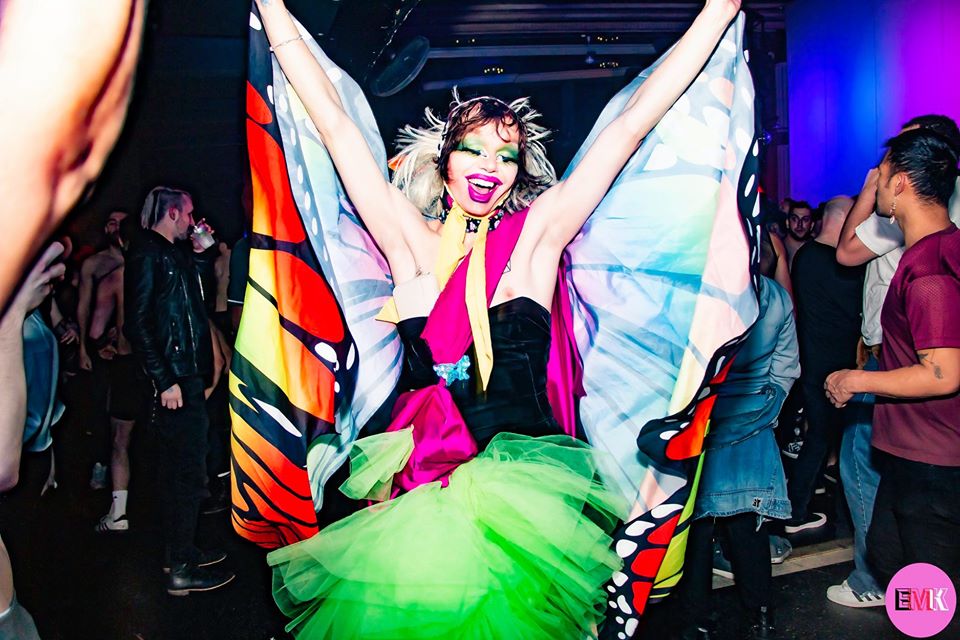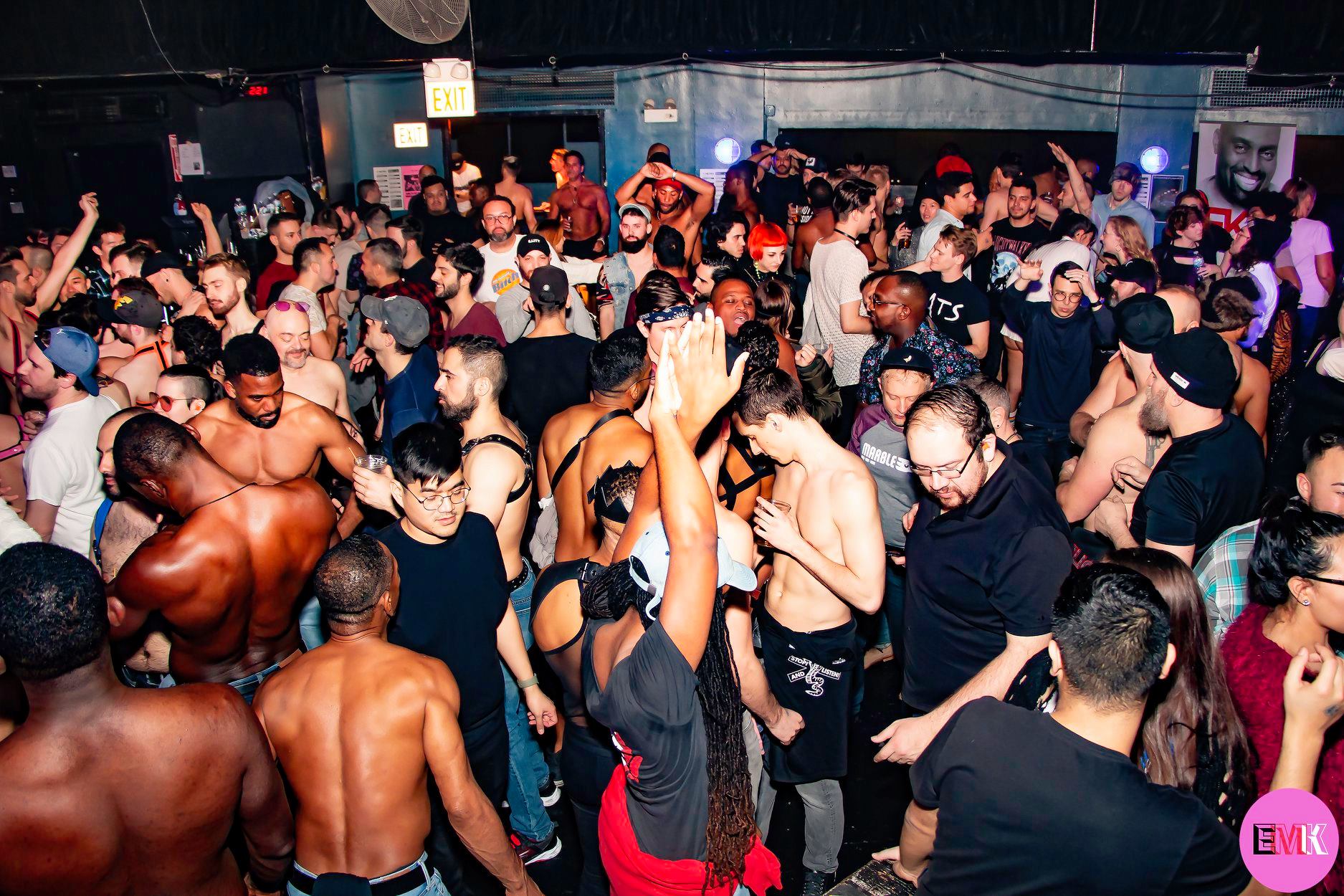On a frigid Sunday afternoon, our congregation completes its pilgrimage to the Stony Island Arts Bank in South Shore, sitting in chairs arrayed like pews throughout its cathedral-like hall. We have come to hear the gospel of Frankie Knuckles, the godfather of house music, just one day after what would have been his sixty-fifth birthday. In the five years since his passing, Frankie may have already been canonized as house’s patron saint; in 2004 the City of Chicago named the street where house was born after him to honor his contribution to the city’s musical legacy, even declaring August 25 to be Frankie Knuckles Day.
The event is titled “Frankie Knuckles and the Power of Liberatory Space,” and DJ Duane Powell is our preacher and sound-selector today. Dressed in all black, complete with a dandy hat, he begins his sermon with a humble introduction. Powell is a tastemaker, a music historian, and the custodian of Frankie Knuckles’s vinyl record collection, housed and digitized on-site at the Arts Bank. A projector shares images of these records—many of their sleeves covered with handwritten notes addressed to Frankie—along with photos of Frankie himself. This rotation of loving and timeless images served as our stained glass windows to adorn the experience.
Powell begins his sermon by telling us that house was formed in “Black queer sanctuaries,” an assertion that is met with clear praises from the crowd. These snaps, cheers and affirmations only escalate throughout the program. The palpable energy of the audience peaks when Powell plays his musical selections between anecdotes. The Church of House is present, and they are itching to worship during the “Sunday Service” dance marathon that would immediately follow.
This day-into-night event carried into yet another dance party, this one a benefit for the Frankie Knuckles Foundation. The fundraiser, “For Frankie!”, is presented annually by Queen!, the weekly queer dance series at Metro/Smartbar where Frankie was a resident DJ until his passing. Undoubtedly followed by unofficial after-hours functions; the tradition of dancing until dawn has yet to be broken, carried on by the next generation of the devout, all seeking salvation through the collective effervescence that house provides.
And today, the devout are present: when Powell asks who had danced at the original Warehouse (active from 1977–82), about forty percent of the crowd raise their hands. The Warehouse, a juice bar formerly located at 206 South Jefferson Street, was the holy site of house music’s genesis. Author Stuart Cosgrove describes house, in the style of mixing that Frankie pioneered, as a religion: the DJ is a ‘high priest’ at their pulpit, with the dancers constituting a ‘fanatical congregation.’
After those first few glorious years, the devoted followed Frankie when he opened his own club, The Power Plant. Soon after, the Warehouse changed venues, becoming The Muzik Box, an underground sanctum beneath downtown Michigan Avenue. It was here where Ron Hardy—one of house music’s most influential progenitors—would take up the mantle and advance the evolution of house in his own image.

Powell tells us that these sites were where people came to find “paradise in the darkest spaces,” where these disciples would dance ’til dawn to decadent beats comprised of a harmonious marriage between disco, soul, and gospel music. Near the program’s end, some of the veterans even stand up to share heartfelt anecdotes from the scene in its beginnings, many acknowledging one another. Moments like this are how house music’s history is re-remembered through collective myth-making.
Among these myths is the narrative that house “rose like a phoenix from the ashes” of 1979’s Disco Demolition, which Powell contests. The infamous event, which was spearheaded by a local radio personality, promised ninety-nine cent admission to a White Sox double header at Comiskey Park in exchange for a disco record that would be destroyed with explosives between games.
Comiskey Park overflowed with 60,000 patrons, many of whom just brought records by Black artists—not even disco tracks—to add to the pyre. Jeering “disco sucks,” fans stormed the field, forming a riot and forcing the Sox to forfeit their second game. A marketing gimmick had become the cultural assassination of disco, a placeholder for the Black, brown, and LGBTQ people that built that musical movement.
This act of war would mark a turning point of disco’s impact on popular culture—but elsewhere in Chicago, Frankie Knuckles had already begun spinning his signature tracks. Quoting Frankie, Powell tells us “house music is disco’s revenge,” and that house’s cultural dominance today proves not only that disco never died, but that its culture of joyful liberation lives on through its sonic successor.
Powell contextualizes the Demolition with the refrain: “The Black body in motion is never without consequence.” Solemnly relaying the story or Tamir Rice—an unarmed Black boy shot and killed at age twelve by a Cleveland police officer—he tells us that the gazebo, where Tamir was playing when he was gunned down, is preserved in the lawn outside the Arts Bank. It stands as a grim monument reminding us that too often, the consequence for a Black boy to play—to exist—is death.
“One is many, two is a mob, three is a threat,” Powell repeats while discussing assemblies of Black bodies. This was the sentiment at many of the dance clubs in Chicago in the seventies. Even the gay, majority-white discotheques had strict quotas on how many Black or brown people could enter at once, Powell states. Limited by your race, your sexual orientation, or both, there was hardly a place you could go dance. The alienation caused by this racist discrimination and ignorant fear created a need for a space that the most marginalized people could call their own.
In spite of these segregated spaces, house and apartment parties on the South Side of Chicago filled this void. Powell relays that despite being membership-only, they grew bigger and bigger, expanding to borrowed spaces not up to fire code; one venue even burned down. Undeterred, The Warehouse would open in 1975 as a private gay club; you didn’t have to be gay to go—everyone was welcome to dance with anyone. A former factory building, 2,000 people could fill its floors in a single night, all seeking the openness of a space that was built for and by Black and gay people.
These underground dancefloors provided a sanctuary where you could be free from judgement, from the hostility of a cold, cold world. House was built, miraculously, in defiance of the darkness of the neoliberal Reagan years, providing shelter to a population plagued by the HIV/AIDS epidemic. Imagine the power that house had to liberate the body, free the mind, and heal the spirit amidst that political landscape.
Powell puts on a disco record and we hear “I’m happy, I’m carefree, and I’m gay” ringing from Carl Bean’s 1977 track “I Was Born This Way.” We are told that this is a strong message because it was from “before it was a time to be proud,” as Powell puts it. This most recent Pride month, June 2019, marked the fiftieth anniversary of the Stonewall Riots, a series of violent demonstrations against the New York City police who raided a bar attempting to arrest patrons, many Black and brown, who were not in compliance with the anti-gay laws of the time. The 1969 riots in New York would change the trajectory of the gay liberation movement in the U.S. forever. A decade later, house’s cultural revolution would be considered Chicago’s “Musical Stonewall,” to quote legendary DJ Craig Cannon.
Powell repeats, “The Black body in motion is never without consequence.” What is the consequence of hundreds of these bodies dancing together? Political revolution (and an inevitable backlash). House culture broke down barriers between marginalized groups, cultivating space where people could create community across intersections of race, class and sexuality. You could believe that utopia is possible because house set that example for a brief, golden hour—until City Hall forced after-hours juice bar venues to close at 2am, effectively shutting them down, in 1987.
“House will never die,” I’m told by Mary, a fellow dancer. She’s been dancing to house since she was a teenager. She tells me it takes her on a spiritual journey; I nod my head. “Its power is innate in the body, the beat is tribal, releasing your soul onto a spiritual journey.” Her words are as moving as they are sincere. The music just “lifts you up immediately.” I know exactly what she means, because not two tracks into the dance party, my spirits are high.
Although Frankie is in Chicago’s LGBT Hall of Fame, some house heads, like Mary, didn’t even know he was gay. This phenomenon is mirrored in present-day consumption of house as a genre of music detached from its queer roots. This retroactive erasure can be explained by the commercialization house experienced during its success in the late eighties, but one cannot deny the music has a queer soul.
“Bad Boy,” one of many collaborations between producer Frankie Knuckles and vocalist Jamie Principle, begins thumping in the middle of Duane’s DJ set. The song’s lascivious pleas hypnotize the now ecstatic throng of dancers, filling the room with steam heat. This is the first original track of Frankie’s played today—his own copy of it, even—and it’s seducing the room with its libidinal innuendo. “Yes we are sexual, too/Bad boys make life satisfying/because we know just what to do,” Jaime sings, amid solicitations, “Well you might call me a queer/Well you might call me a freak.” Lyrics immortalized in wax: a testament to the hostile reality for queer people of the eighties, but a flagrant rebuke of those prejudices nonetheless.
Punctuated with moans, Jaime continues, “I know you’re looking for pleasure/your reasons are understood/You want to find the real party/you want to really let go/For the right price I will take you/to the place you want to go.” These words aren’t just meant to scandalize, they are anthemic and empowering with their lewdness. Explicitly homoerotic, this track was an unabashedly sex positive staple of the dancefloor at the same time that fear dominated the gay community as it weathered the HIV/AIDS crisis. The chants command: feel free to be intimate, to be fearless, to love.
“Oh, I’m just a bad boy,” I sing along—it’s one of my favorites. I must confess: I’m one of the devout. Covered in sweat and beaming, I am relishing the opportunity to dance to Frankie’s vinyl once more. A delinquent, I found this church at age twenty-one on a Sunday night at Queen!, Frankie’s last pulpit, not knowing I was dancing in the audience of a living legend. For years, I would take the midnight train across the city to worship with Chicago’s house community, many of whom worked in the service industry and had Mondays off. Years later, this party would win the honor of being named the Best Dance Party in the city by the Reader, prompting hours-long waits on busy weekends.
People line up for a reason: the euphoric experience of togetherness is incomparable. As much as I have tried to convey the beauty of house with words, you simply have to experience it for yourself. Find it in a record store, in a nightclub, or in some wayward tabernacle, but you will not be able to deny the clarion call of its beat. Until you come home, we will keep the flame burning bright.
Jeremy is a Bolivian-American artist, writer, and performer. Born in Panama, raised amid the cornfields of Illinois, and reared in Chicago’s queer underground, they are currently working on a TV series that dramatizes the rise of house music in Chicago. They are looking for collaborators who are passionate about building a story that centers house culture’s architects. Follow them on Twitter and Instagram at @weworshipon. This is their first contribution to the Weekly.

